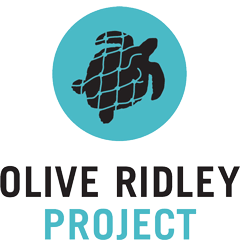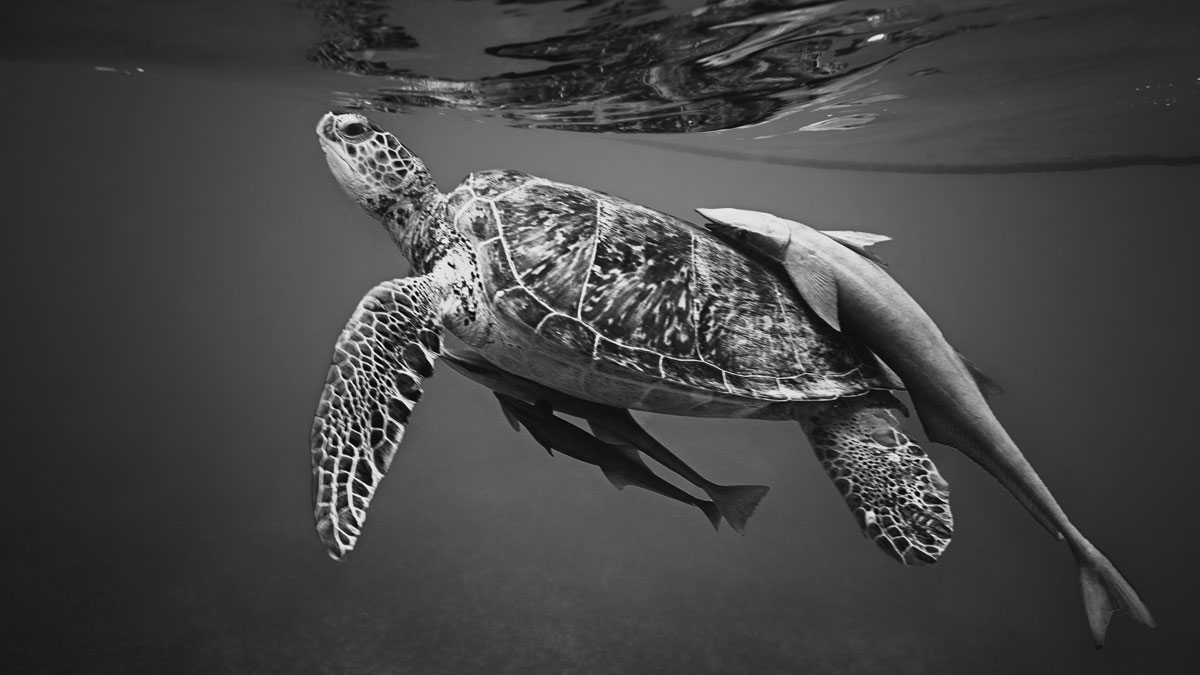
Green turtle and cleaner fish, Maldives. © Mia Stawinski.
Mutualism
In a mutualistic relationship both organisms benefit from living closely together in a symbiotic relationship. We can for example observe this on cleaning stations. Different fish nibble on old skin and small creatures such as parasites living on the sea turtle. The fish gets dinner, the turtle a free surface clean!
Commensalism
In this type of symbiotic relationship, one organism benefits, the other is neither harmed nor helped. The most obvious hitchhikers catching a ride on a turtles shell are so called remoras. These fish use bigger sea creatures such as sharks, mantas or turtles as a taxi – even if occasionally a rather slow one.
They rest on the turtles shell, hide under them and just occasionally snatch a bit of discarded food from the turtle. We can sometimes see the turtles getting impatient with a remora, trying to shove it away with it’s flippers.
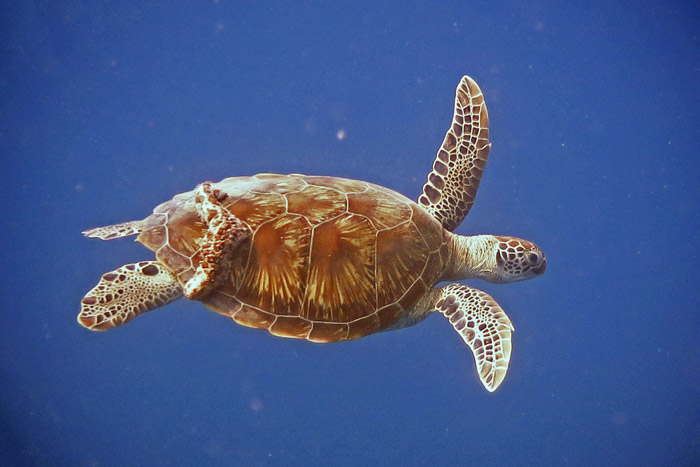
GöWi with a sea cucumber hitchhiker. Photo by Dr Stephanie Köhnk.
Last year, we also spotted a rather unexpected hitchhiker on one of our named green turtles called GöWi – a sea cucumber! It most likely walked onto the turtles shell when the turtle had a nap earlier. It had to cling on quite tightly when the little turtle sped up and down the reef!
The same is true for this marine snail sitting on another juvenile green turtle we know very well called Beag.

Beag, a green turtle, with a snail hitchhiker.
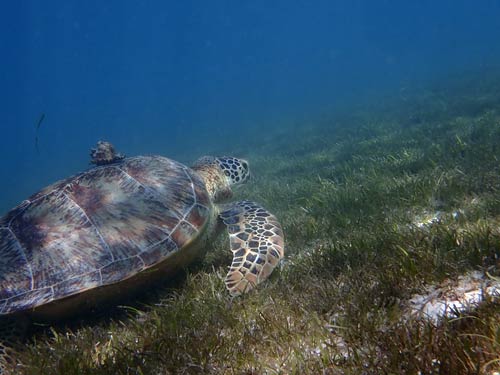
Beag, a green turtle, with a snail hitchhiker.
But not all commensals hitching a ride on sea turtle shells are as easy to spot with the naked eye as the examples above. Many of these organisms belong to the so-called micro- and meiofauna and are smaller than 1mm in size. They use the algae mats growing on the shell as their home.
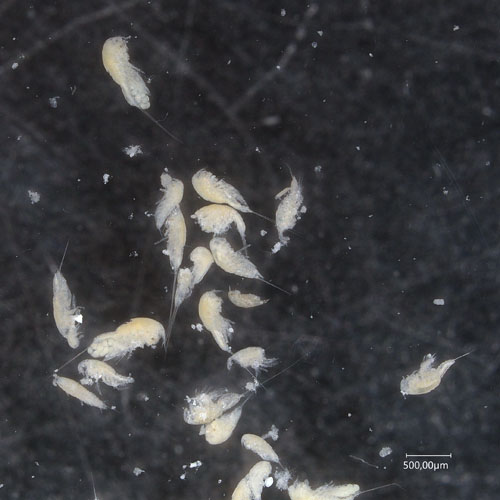
Copepods, meaning oar-feet, seen under a microscope.
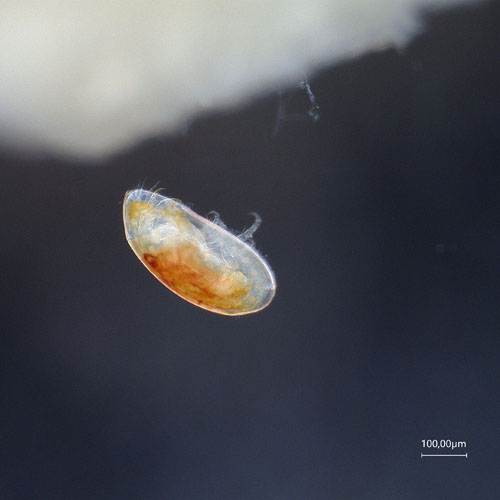
An ostracod, also known as seed shrimp, seen under a microscope.
Crustaceans like copepods, meaning oar-feet, or ostracods, also known as seed shrimp, can inhabit a turtles shell in great numbers without being noticable.
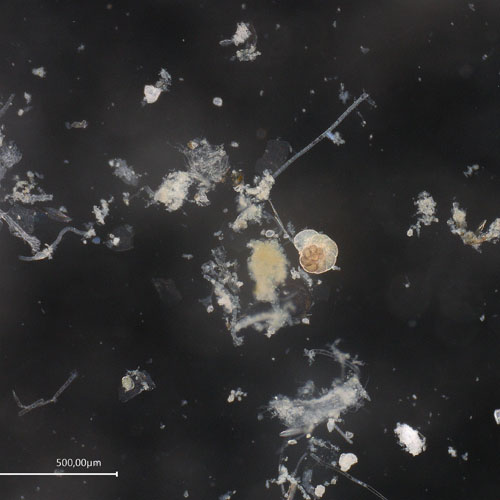
Microscopic formainifera seen under a microscope.
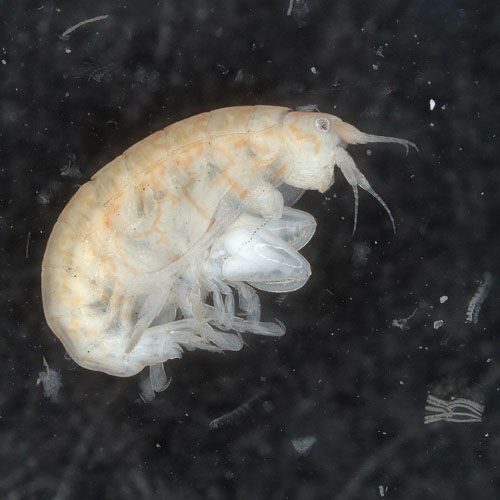
An amphipod (sideswimmer) seen under a microscope.
Smaller snails, microscopic formainifera, as well as amphipods, sideswimmers, can also be observed. It is an entire microcosm, much of which is still to be discovered!
Parasitism
Parasites are living in or on another organism, the so-called host. The parasite benefits, while the host is harmed in the process.
Most obvious organisms living on the outside of the turtle, so-called ectoparasites, are barnacles. These are not parasites per se, but become parasitic and harmful in excessive numbers. There are different types of barnacles known from sea turtles, the glueing and embedding types.
The typical barnacle uses a special substance it secretes, the ‘cement’, to glue itself onto a surface of the host. Glueing barnacles belonging to the genus Chelonibia are found on turtles, as their name already indicates (Chelonia = turtle).
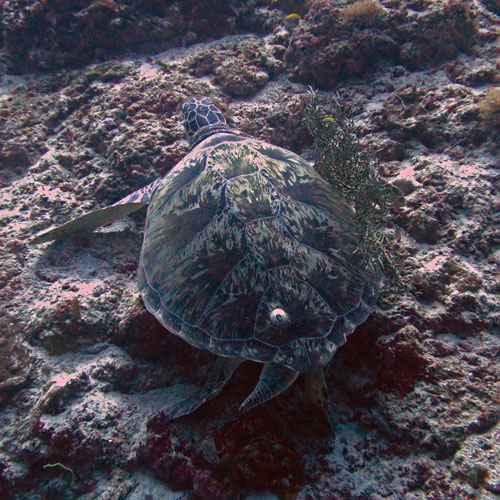
Kaela, GR326, with a single Chelonibia barnacle.

Close up of a Chelonibia barnacle.
Embedding barnacles, such as the species Platylepas hexastylus can, infiltrate the skin or shell of the host turtle, thus causing more damage to the tissue. These barnacle wounds can also be an opening for bacteria to enter the turtles body, thus causing real illness.

4 whole specimen of embedding barnacle Platylepas hexastylus seen under a microscope.
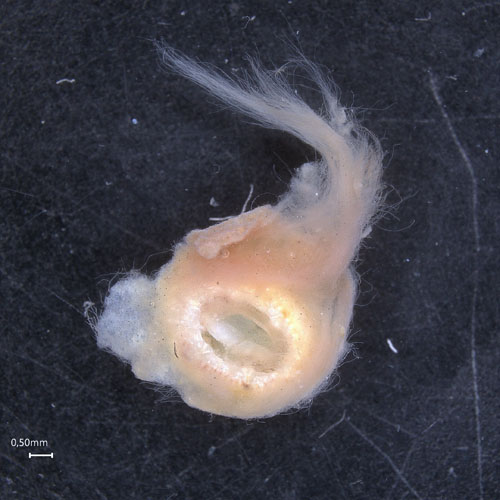
Platylepas hexastylus with with funny algae growth seen under a microscope.
Excessive barnacle cover can be a sign of general bad health of a turtle. Usually sea turtles are debilitated first, and then become covered in an extensive amount of other organisms, such as barnacles and algae.
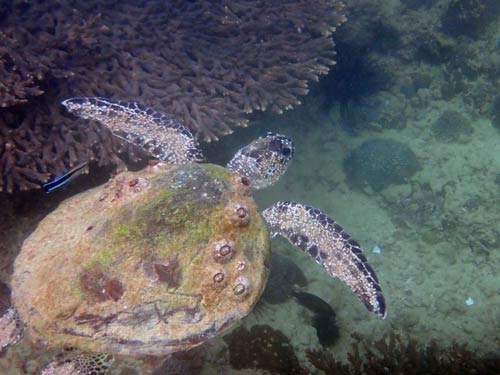
Green turtle with barnacles, Oman.

Green turtle with algae, Oman
Luckily turtles are very resilient and can sometimes recover from such infestations. Through our photo ID program, we have been able to document the development of a hawksbill in Noonu Atoll, which recovered from very high barnacle cover and seems to be doing very well again!
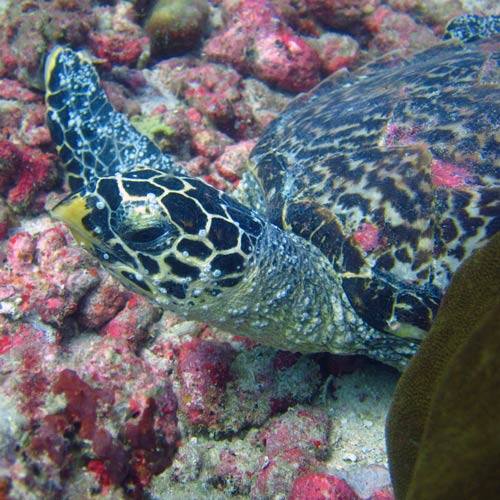
Hawksbill turtle Orimas with high barnacle cover. ©Karin Nistler, Prodivers.
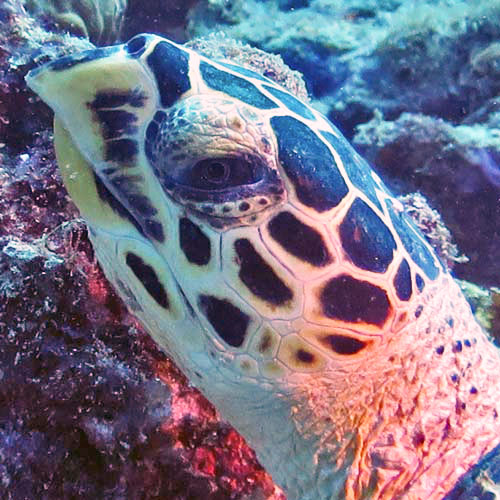
Hawksbill turtle Orimas after recovering from high barnacle cover. Photo by Dr Stephanie Köhnk.
Other organisms are so-called obligate parasites – they are always considered parasitic. One example of sea turtle parasites are the marine leeches of the genus Ozobranchus. Like their freshwater cousins, they feed on the blood of the host.
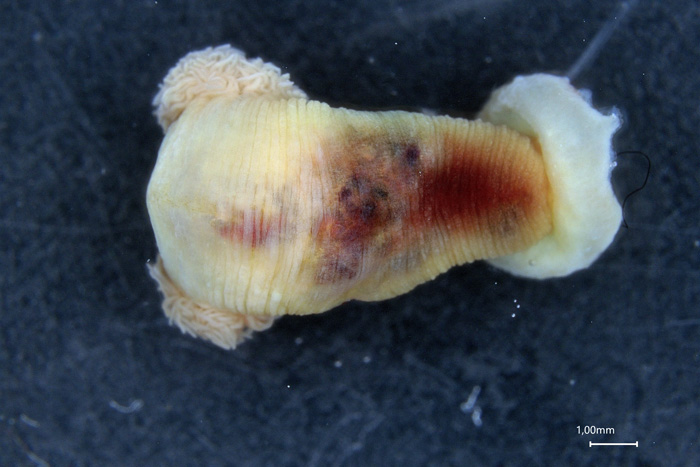
An Ozobranchus margoi recovered from an entangled olive ridley turtle in the Maldives, seen under a microscope.
Ozobranchus sp. leeches typically have several pairs of gills on the sides of their body and they are potential vectors for blood-borne diseases, since they directly access the bloodstream of their host. One such disease that they are currently considered to play a part in transmission is fibropapillomatosis, a tumor-disease affecting sea turtles which has been connected to a virus.
What the hitchhikers can tell us
As sea turtles are endangered and at risk of becoming extinct, it is very important for us to know how healthy our present sea turtle populations are. Healthier populations are more likely to withstand further stress such as man-made pollution or climate change. Our Photo-ID program helps us monitor the presence of parasites or severely weakened turtles in certain areas.
Furthermore, the creatures living on a sea turtle might actually be able to tell us more about the origins of the sea turtle itself. Just like their host, the parasite also has a specific genetic code. In the future, we might be able to infer the source population of the olive ridley turtles we find entangled in ghost nets in the Maldives without having to invasively take tissue samples from the sea turtle, but just by looking at the organisms living on it.
All microscopic images taken by Dr Stephanie Köhnk in collaboration with the Crustacea Section, Leibniz Institute for Biodiversity Analysis, Hamburg.

